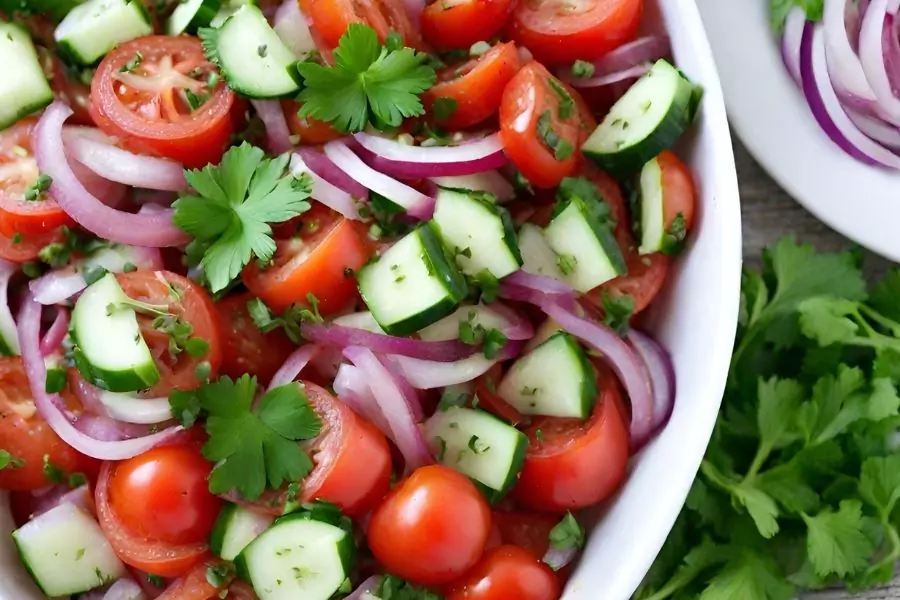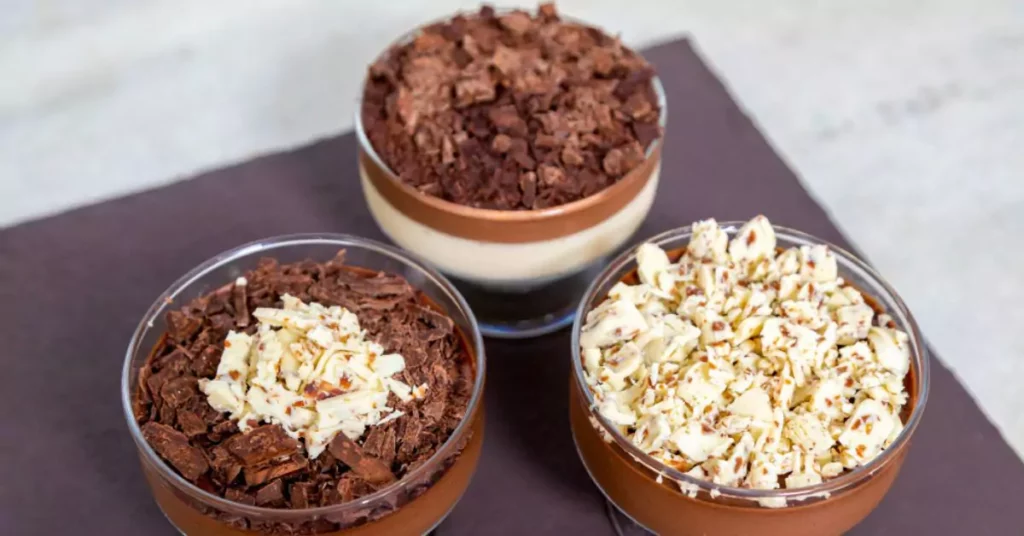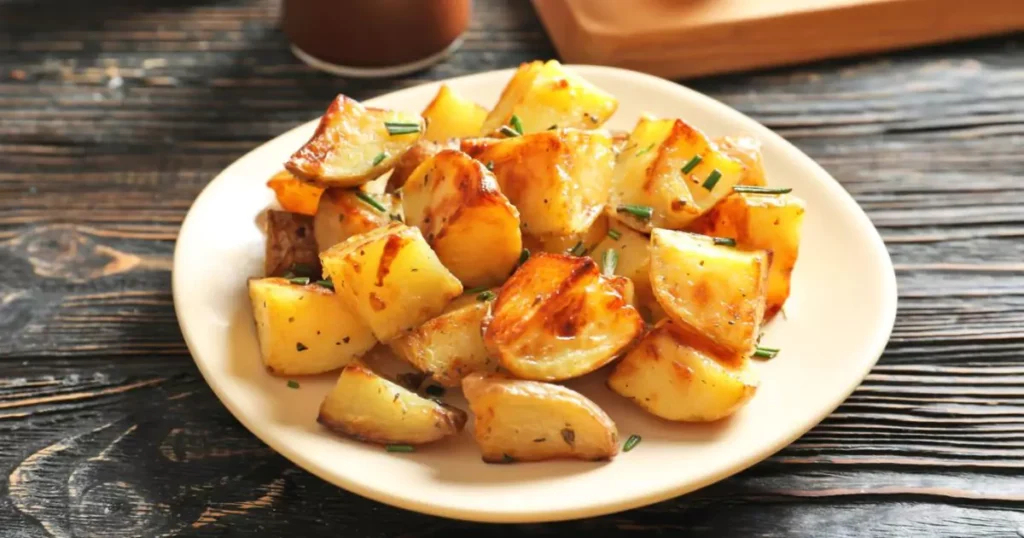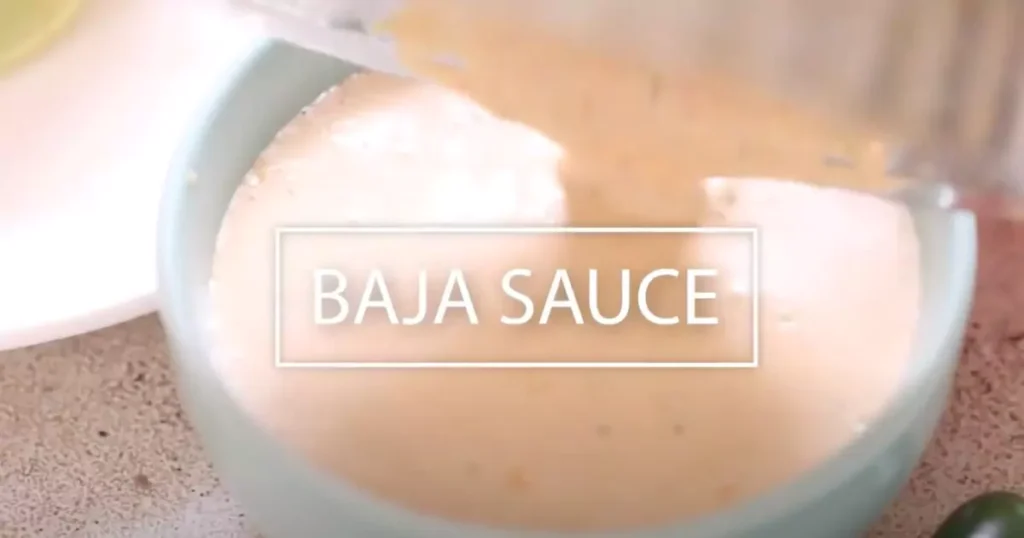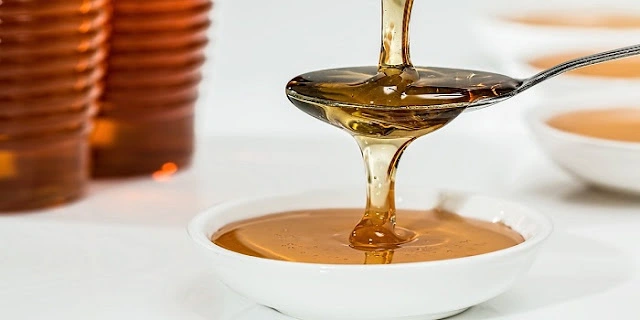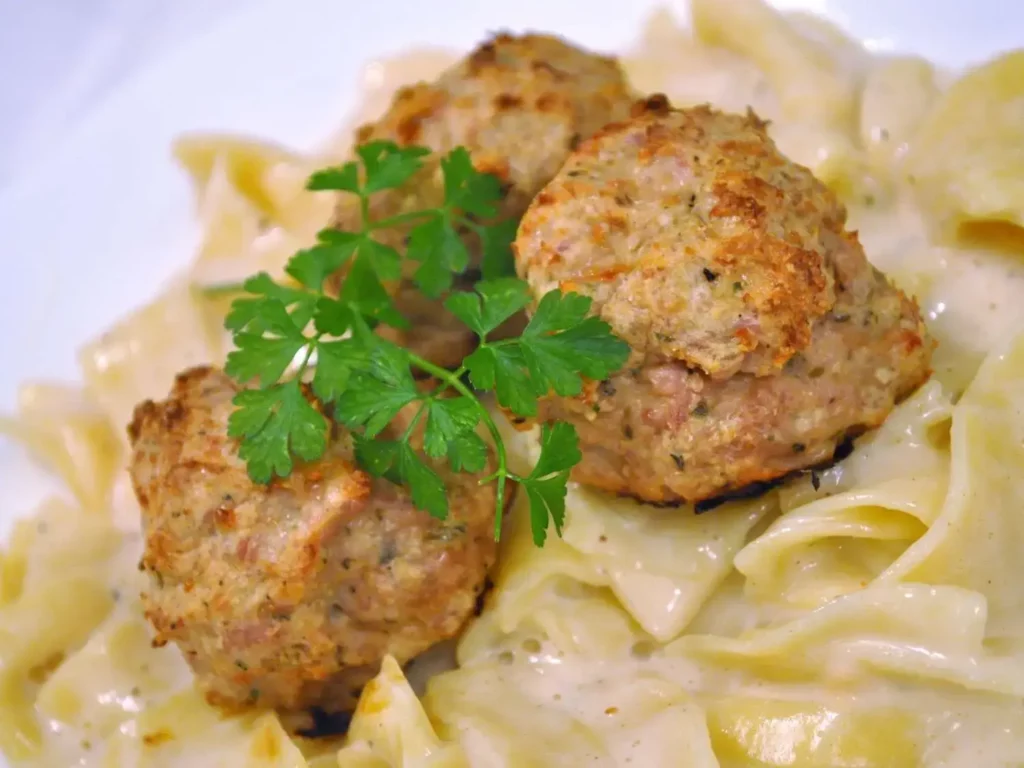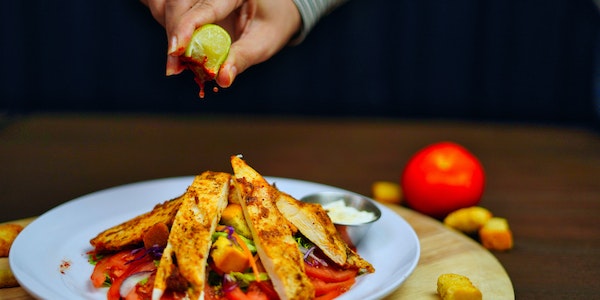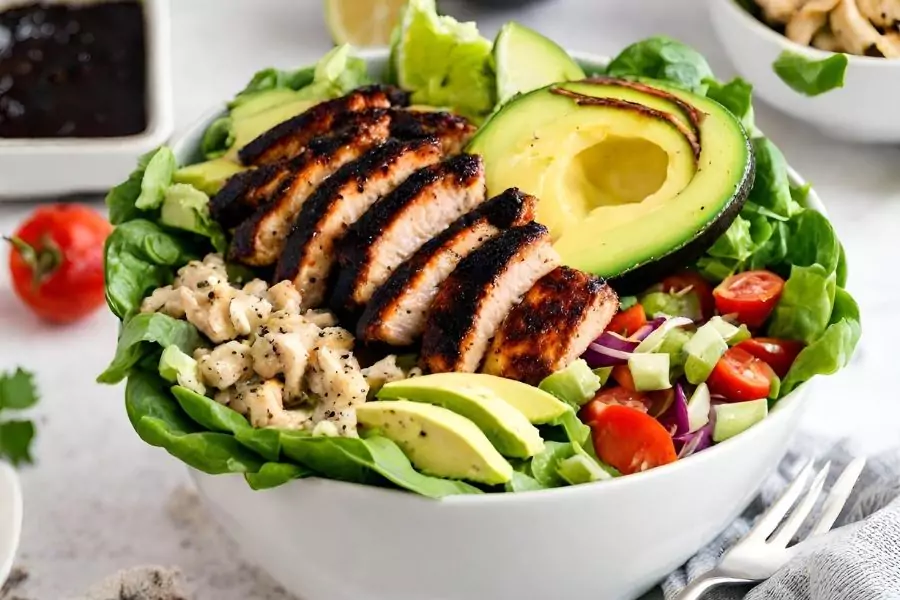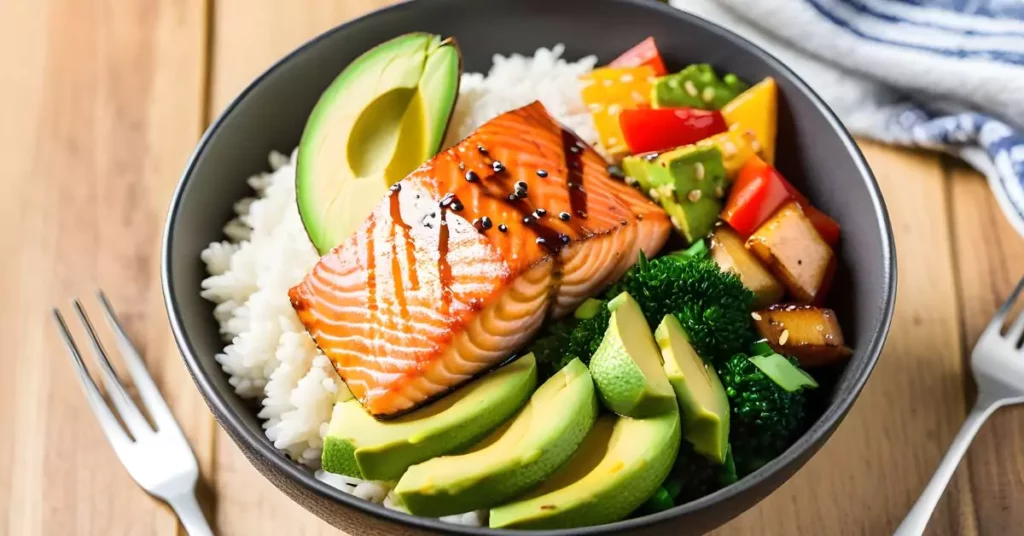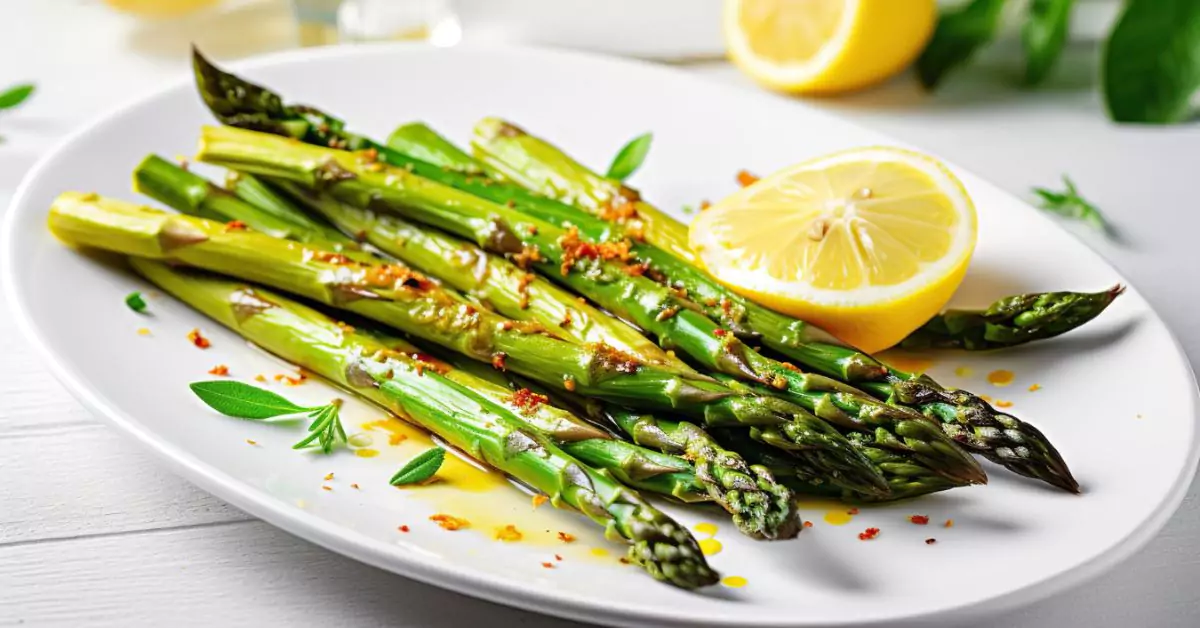
Embarking on a culinary journey can be both exciting and intimidating, especially for those just starting out or for those keenly focused on health and nutrition. Our recipe today spotlights a vegetable known for its unique flavor and impressive nutritional profile: asparagus. This simple yet delightful asparagus recipe is tailored for anyone from cooking novices to health-conscious gourmets. With a few basic ingredients and a straightforward preparation method, this dish promises to be a staple in your cooking repertoire. Whether you’re trying to impress at a dinner party or simply looking for a nutritious addition to your meal, this asparagus recipe, rich in flavor and health benefits, is an excellent choice.
The Basics of Asparagus
Asparagus, a perennial flowering plant, is more than just a common side dish. It’s a powerhouse of nutrients, flavors, and culinary versatility. Understanding its varieties, flavor profile, and health benefits is essential for both beginners in cooking and health enthusiasts.
1. Types of Asparagus
There are three main types of asparagus: green, white, and purple. Green asparagus, the most common, has a robust flavor and is excellent for grilling or roasting. White asparagus, grown underground to inhibit chlorophyll development, is milder and more delicate. Lastly, purple asparagus is smaller and fruitier, with a higher sugar content.
2. Flavor Profile
Asparagus has a distinct, slightly earthy flavor, with a crisp yet tender texture when cooked properly. It pairs well with various seasonings and ingredients, making it a versatile component in many dishes.
3. Nutritional Value
Asparagus is low in calories yet rich in vitamins and minerals. It’s an excellent source of fiber, folate, vitamins A, C, and K, and also contains a good amount of antioxidants. These nutrients contribute to improved digestive health, blood pressure regulation, and other benefits.
4. Incorporating Asparagus into Your Diet
For beginners and health enthusiasts, asparagus is an ideal vegetable. It’s not only easy to prepare but also aligns well with a health-conscious diet. Whether steamed, roasted, grilled, or stir-fried, asparagus maintains its nutritional integrity and complements a variety of dishes.
5. Asparagus and Health
Regular consumption of asparagus can contribute significantly to a balanced diet. Its high fiber content aids in digestion and regularity. The antioxidants present in asparagus, such as flavonoids and polyphenols, have been linked to reduced inflammation and oxidative stress. Furthermore, asparagus is known for its folate content, vital for cell growth and making it an excellent choice for pregnant women.
In summary, asparagus is a versatile and nutritious vegetable that should have a place in every kitchen. Its ease of preparation makes it perfect for beginners, while its health benefits appeal to those focused on nutrition. In the following sections, we will delve into a simple yet delightful asparagus recipe that brings out the best of this incredible vegetable.
Step-by-Step Recipe Guide
Cooking asparagus to perfection is a skill that every beginner in the kitchen should have in their arsenal. This recipe not only delivers on taste but is also incredibly straightforward, making it ideal for those just starting out or looking to add a healthy dish to their routine.
1. Preparing the Ingredients
Before you begin, ensure you have all your ingredients ready. For this recipe, you will need:
- 1 bunch thin asparagus spears, trimmed
- 3 tablespoons olive oil
- 1 ½ tablespoons grated Parmesan cheese (optional)
- 1 clove garlic, minced (optional)
- 1 teaspoon sea salt
- ½ teaspoon ground black pepper
- 1 tablespoon lemon juice (optional)
2. Preheating the Oven
Start by preheating your oven to 425 degrees F (220 degrees C). This high temperature is key to achieving a slight char and tender texture.
3. Preparing the Asparagus
While the oven heats, prepare the asparagus. Wash the spears thoroughly and trim the woody ends. The best way to do this is by bending the asparagus spear until it naturally snaps.
4. Seasoning the Asparagus
Place the asparagus in a mixing bowl. Drizzle it with olive oil and toss to ensure each spear is evenly coated. This not only adds flavor but also helps in even cooking.
Next, if you’re using them, sprinkle the asparagus with grated Parmesan cheese and minced garlic. These ingredients are optional but recommended for an added depth of flavor. Season with sea salt and black pepper.
5. Arranging in the Baking Dish
Lay the asparagus out in a single layer in a baking dish or on a baking sheet. This ensures that each spear cooks evenly and gets nicely browned.
6. Baking the Asparagus
Bake the asparagus in the preheated oven for 12 to 15 minutes. The exact time may vary depending on the thickness of your asparagus spears. You’re looking for a texture that is tender but still offers a bit of a bite.
7. The Final Touch
Once the asparagus is just tender, remove it from the oven. If you opted for lemon juice, now is the time to sprinkle it over the cooked asparagus. The lemon juice adds a fresh, zesty finish that complements the roasted flavors wonderfully.
8. Serving
Serve the asparagus hot, straight from the oven. It makes an excellent side dish to a variety of main courses, or can be enjoyed on its own as a healthy snack.
This asparagus recipe, with its minimal ingredients and simple preparation, is an excellent starting point for beginners in cooking. Not only is it foolproof, but it also allows for creative variations.
Recipe Variations
One of the joys of cooking is the ability to experiment and tailor recipes to your own taste and dietary needs. This basic asparagus recipe is wonderfully adaptable, allowing for numerous variations.
1. Dietary Adjustments
- Vegan Version: To make this recipe vegan-friendly, simply omit the Parmesan cheese or replace it with a vegan cheese alternative. Nutritional yeast can also be a great addition for a cheesy flavor without dairy.
- Gluten-Free Needs: This recipe is naturally gluten-free, making it suitable for those with gluten sensitivities or celiac disease.
2. Flavor Enhancements
- Herb Infusion: Enhance the flavor by adding herbs such as rosemary, thyme, or tarragon. Fresh herbs can be mixed in with the olive oil before tossing with the asparagus.
- Spice It Up: For those who enjoy a bit of heat, sprinkling crushed red pepper flakes or a dash of cayenne pepper can add a spicy kick.
3. Additional Ingredients
- Adding Proteins: For a heartier dish, consider adding slices of bacon or prosciutto around the asparagus spears before baking. You can also top the cooked asparagus with flaked almonds or walnuts for added protein and crunch.
- Vegetable Mix: Roast the asparagus with other vegetables like cherry tomatoes, bell peppers, or onions for a colorful and nutrient-rich side dish.
4. Cooking Method Variations
- Grilled Asparagus: Instead of baking, try grilling the asparagus. This method imparts a smoky flavor that is especially delightful in the warmer months.
- Stir-Fried Asparagus: Quickly stir-frying asparagus in a hot pan with a bit of oil and garlic offers a crunchy texture and a vibrant green color.
5. Sauces and Toppings
- Sauce Options: Drizzle balsamic reduction, hollandaise sauce, or a light lemon-dill sauce over the cooked asparagus for an extra flavor dimension.
- Cheese Toppings: Experiment with different types of cheese. Feta, goat cheese, or shaved Pecorino Romano can offer varying tastes and textures.
6. Asparagus as a Main Dish
- Asparagus Pasta: Incorporate roasted or grilled asparagus into pasta dishes. It pairs well with creamy sauces, pesto, or a simple olive oil and garlic base.
- Asparagus Risotto: Stir chopped asparagus into a risotto during the last few minutes of cooking for a luxurious and comforting meal.
7. International Flavors
- Asian Twist: For an Asian flair, toss the asparagus in sesame oil instead of olive oil, and sprinkle with sesame seeds and a dash of soy sauce before serving.
- Mediterranean Style: Combine the roasted asparagus with feta, olives, and sundried tomatoes for a Mediterranean-inspired side dish.
Health Benefits of Ingredients
Each ingredient in our simple asparagus recipe not only contributes to its delightful taste but also brings along a host of health benefits. Understanding these can help health enthusiasts and beginners in cooking make informed choices about their diet.
1. Asparagus: A Nutrient-Dense Vegetable
- Rich in Vitamins and Minerals: Asparagus is loaded with vitamins A, C, E, and K, along with folate and trace minerals like iron and copper. These nutrients are essential for a variety of bodily functions, including immune system support and blood clotting.
- High in Antioxidants: Antioxidants in asparagus, such as flavonoids and polyphenols, help combat oxidative stress and may reduce the risk of chronic diseases.
- Aids Digestive Health: The high fiber content in asparagus supports digestive health, promoting regularity and aiding in good gut bacteria balance.
2. Olive Oil: Heart-Healthy Fat
- Monounsaturated Fats: Olive oil is rich in monounsaturated fats, which are known for their heart-health benefits, such as lowering bad cholesterol levels.
- Anti-Inflammatory Properties: The phenolic compounds in olive oil have anti-inflammatory effects, which can be beneficial in reducing the risk of chronic diseases.
3. Parmesan Cheese: Calcium and Protein
- Calcium-Rich: Parmesan cheese is a good source of calcium, which is vital for bone health.
- Protein Source: It also provides protein, essential for muscle repair and growth, making it an excellent addition for those seeking a balance of taste and nutrition.
4. Garlic: Immune Boosting and Medicinal Qualities
- Boosts Immunity: Garlic contains compounds with medicinal properties, known to boost the immune system.
- Reduces Blood Pressure: It has been shown to help lower blood pressure and improve cholesterol levels, contributing to heart health.
5. Lemon Juice: Vitamin C and Freshness
- High in Vitamin C: Lemon juice adds not just a zesty flavor but also a good amount of vitamin C, essential for immune system function and skin health.
- Aids Iron Absorption: The citric acid in lemon juice can enhance iron absorption from other foods, making it a beneficial addition to the dish.
In summary, each ingredient in this asparagus recipe brings its own set of health benefits, making the dish not only a treat for the taste buds but also a boon for overall health. This makes it an excellent choice for health-conscious individuals and beginners looking to prepare nutritious meals.
Storage Tips
Proper storage of asparagus and the finished dish is crucial for maintaining freshness and nutritional value. These tips will help beginners and health enthusiasts alike keep their asparagus delicious and safe to eat for as long as possible.
1. Storing Fresh Asparagus
- In the Refrigerator: Fresh asparagus should be stored in the refrigerator. Trim the ends and place the spears upright in a container filled with a small amount of water. Alternatively, wrap the ends in a damp paper towel and encase them in a plastic bag.
- Lasting Freshness: Stored properly, fresh asparagus can last in the fridge for up to 5 days. Change the water every couple of days if you’re using the water method.
2. Storing Cooked Asparagus
- Cooling Down: Let the cooked asparagus cool to room temperature before storing it to prevent condensation and bacterial growth.
- Airtight Containers: Place the cooled asparagus in an airtight container. This will keep it fresh and prevent it from absorbing odors from other foods in the fridge.
- Refrigeration Duration: Cooked asparagus can last in the refrigerator for up to 3 days.
3. Freezing Asparagus
- Blanch Before Freezing: If you want to freeze asparagus, blanch it first by boiling it briefly and then plunging it into ice water. This process preserves its color, flavor, and nutritional value.
- Freezer Storage: After blanching, dry the spears thoroughly, place them in a single layer on a baking sheet to freeze, and then transfer them to a freezer bag or airtight container. Frozen asparagus can last for up to 8 months.
4. Reheating Cooked Asparagus
- Best Methods: Reheat asparagus in the oven or on the stovetop for the best texture. Microwaving can make it too soft and may unevenly heat it.
By following these storage tips, you can ensure that your asparagus stays fresh and delicious, whether it’s fresh from the store or cooked to perfection.
FAQs
1. How Do I Know When Asparagus Is Cooked Perfectly?
Asparagus is cooked perfectly when it’s tender but still has a slight crunch. The color should be vibrant green. Overcooked asparagus becomes mushy and loses its flavor.
2. Can I Use Thick Asparagus Instead of Thin for This Recipe?
Yes, you can use thick asparagus, but it may require a longer cooking time. Thick spears can also be peeled slightly at the ends to ensure even cooking.
3. Is It Necessary to Peel Asparagus?
Peeling is not necessary for thin asparagus but can be beneficial for thicker spears to remove the fibrous outer layer.
4. Can I Make This Recipe Ahead of Time?
Yes, you can prepare this dish ahead of time and reheat it. However, it’s best served fresh to maintain the optimal texture and flavor.
5. How Can I Add More Protein to This Dish?
You can add proteins like grilled chicken, salmon, or tofu for a more substantial meal. Nuts and seeds also make a great protein-rich addition.
6. Are There Any Health Concerns With Eating Asparagus?
Asparagus is generally safe and healthy. However, it contains purines, which can be a concern for people with gout. It also causes a distinct odor in urine, which is harmless and natural.
7. What Are the Best Seasonings to Pair with Asparagus?
Asparagus pairs well with garlic, lemon, Parmesan, balsamic vinegar, and various herbs like rosemary, thyme, and tarragon. Feel free to experiment with flavors.
Conclusion
A Recap of the Journey
We’ve explored the basics of asparagus, delved into a step-by-step guide for preparing a delicious dish, and discovered various recipe variations to suit different tastes and dietary needs. The health benefits of each ingredient were highlighted to emphasize the nutritional value of this dish. Practical storage tips were also provided to ensure the longevity and freshness of your asparagus, whether it’s raw or cooked.
Encouragement for Experimentation
This guide encourages you, the reader, to experiment with asparagus in your kitchen. Whether it’s trying out different cooking methods, exploring new flavor combinations, or incorporating asparagus into other dishes, there’s a world of culinary possibilities waiting to be discovered.
For those focused on health and nutrition, this asparagus recipe is a perfect example of how simple ingredients can yield a dish rich in vitamins, minerals, and antioxidants. It’s a reminder that eating healthily does not mean sacrificing flavor or enjoyment.
We hope this guide inspires you to try this recipe, experiment with your own variations, and make asparagus a regular part of your cooking repertoire. Happy cooking!












